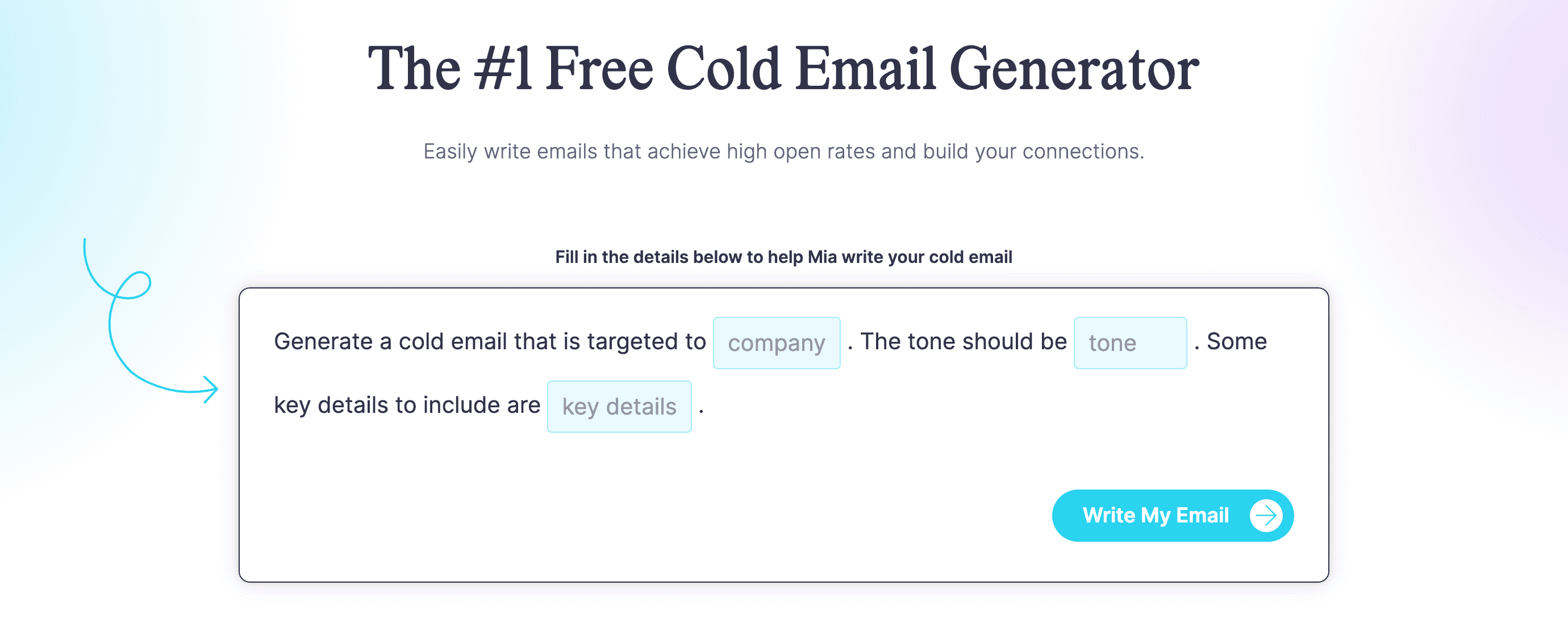Cold Email Marketing: Everything You Need to Know to Succeed (+Templates)
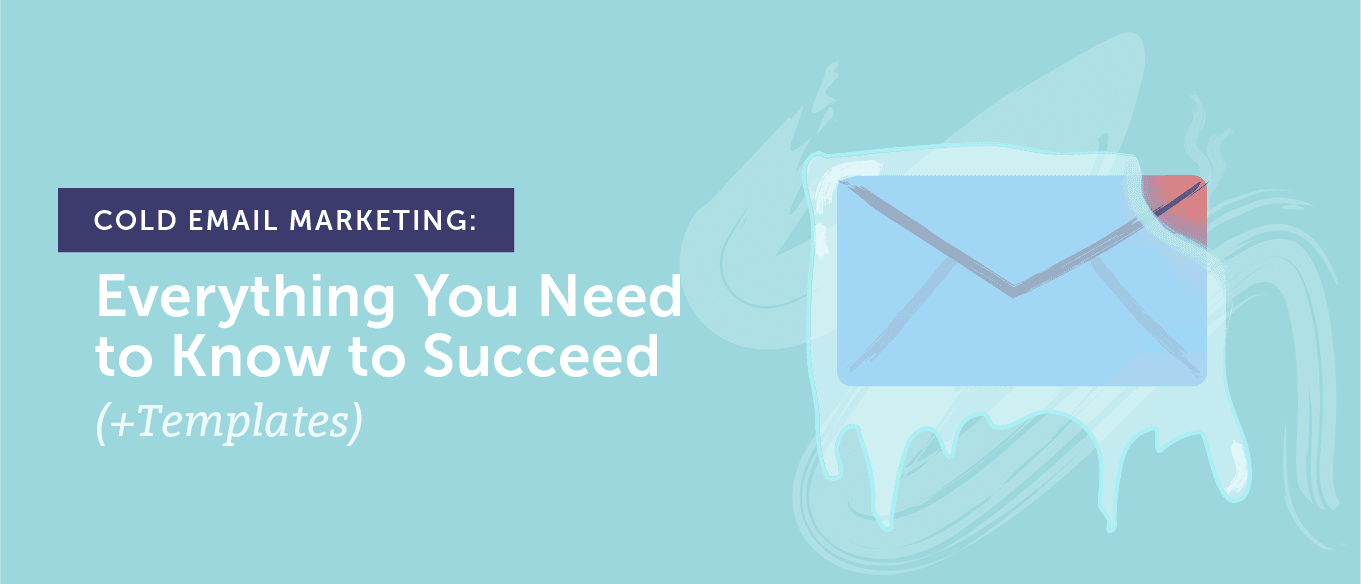 There are generally two ways people acquire leads these days:
There are generally two ways people acquire leads these days:
- Investing money in advertisements to create awareness about a product/service.
- Using inbound/content marketing to build and nurture an audience that will, ultimately, turn to customers.
Cold email marketing: Everything you need to know to succeed (+templates)
Click To TweetDownload the Best Cold Email Marketing Templates
Rule number one for cold email marketing: don't go in blind. Before you move on, don't forget to grab a few of the best templates for keeping up with your cold email marketing plans and actions. Your outreach efforts shouldn't go to waste just because you didn't put in the effort to plan accordingly. Don't hesitate; download your templates right here, right now.- Email Marketing Calendar Template
- Email Outreach Pitch Template
- Influencer Outreach Tracking Template
What is Cold Email Marketing?
Cold email marketing is when you send an email to a contact in which you have no prior connection or relationship. You don't have prior permission from them to be in contact, either. The purpose here is getting them to do business with you. Contrary to the usual way email marketing is done, in which people give you their email address and permission to send them an email, a cold email is being sent to a complete stranger.
Contrary to the usual way email marketing is done, in which people give you their email address and permission to send them an email, a cold email is being sent to a complete stranger.
Why Would You Send a Cold Email?
Now that we’ve looked at the definition of cold email marketing, a question you might want to ask is, “Why would anyone send a cold email?” Here are some key reasons why you might want to send a cold email:- It's effective: Based on an analysis of 20 million cold emails, the average cold email has an open rate of 53%. Getting 53% of a potentially unlimited number of people to see your message about anything is impressive.
- It yields results, fast: I’ve gotten a client from cold pitching within two days of starting a cold email marketing campaign. I generally get results within a week of starting the majority of my cold email marketing campaigns. You can get results from cold emailing a lot faster compared to inbound marketing, where it usually takes an average of 6–9 months to get results. Cold emailing usually gets responses within days or weeks.
- It's scalable: You can contact an unlimited number of people. On my best days, I’ve had an average of about 150 people joining my email list in a day — a number that is conditioned on my traffic. With cold email marketing, I can reach out to 1,500, 15,000, or more in a day. The possibilities are endless.
- Cold emailing is generally free: Once you have access to an email account, you don’t have to pay to send cold emails; it's free. That said, you might need to invest in a few tools, such as an email address finder, an email open tracker, etc. These will cost you but using them isn’t a must. You’ll find free tools that allow you to do the same things with some manual effort. The downside is that this will be time-consuming.
Is Cold Email Marketing Legal?
Of course, you’ve probably gotten thousands of those spam emails promising to make you rich. For some reason, they might be synonymous with cold emails, in your mind. Wouldn’t this mean that cold email marketing is illegal? Not necessarily. While there are a lot of outrightly spammy — and even illegal — cold emails being sent, sending cold emails is perfectly legal in most parts of the world. There is a law guiding cold email marketing, known as the CAN-SPAM Act. Basically, this law says cold emails should not use false headers or deceptive subject lines. You should also give people an option to opt out from your cold emails and promptly honor these requests when you get them. This act applies not just to cold emails, but also emails sent with email marketing services.
Cold email marketing is perfectly legal, as long as you comply with the CAN-SPAM Act.
There is a law guiding cold email marketing, known as the CAN-SPAM Act. Basically, this law says cold emails should not use false headers or deceptive subject lines. You should also give people an option to opt out from your cold emails and promptly honor these requests when you get them. This act applies not just to cold emails, but also emails sent with email marketing services.
Cold email marketing is perfectly legal, as long as you comply with the CAN-SPAM Act.
Start By Coming Up With a Prospect List
While this article will give you my step-by-step process for coming up with effective cold pitches, it is important to realize two key facts:- The cold email marketing process starts with prospecting; you should ideally put more time into prospecting than sending the actual cold email.
- Your cold email marketing will only be successful if you get prospecting right.
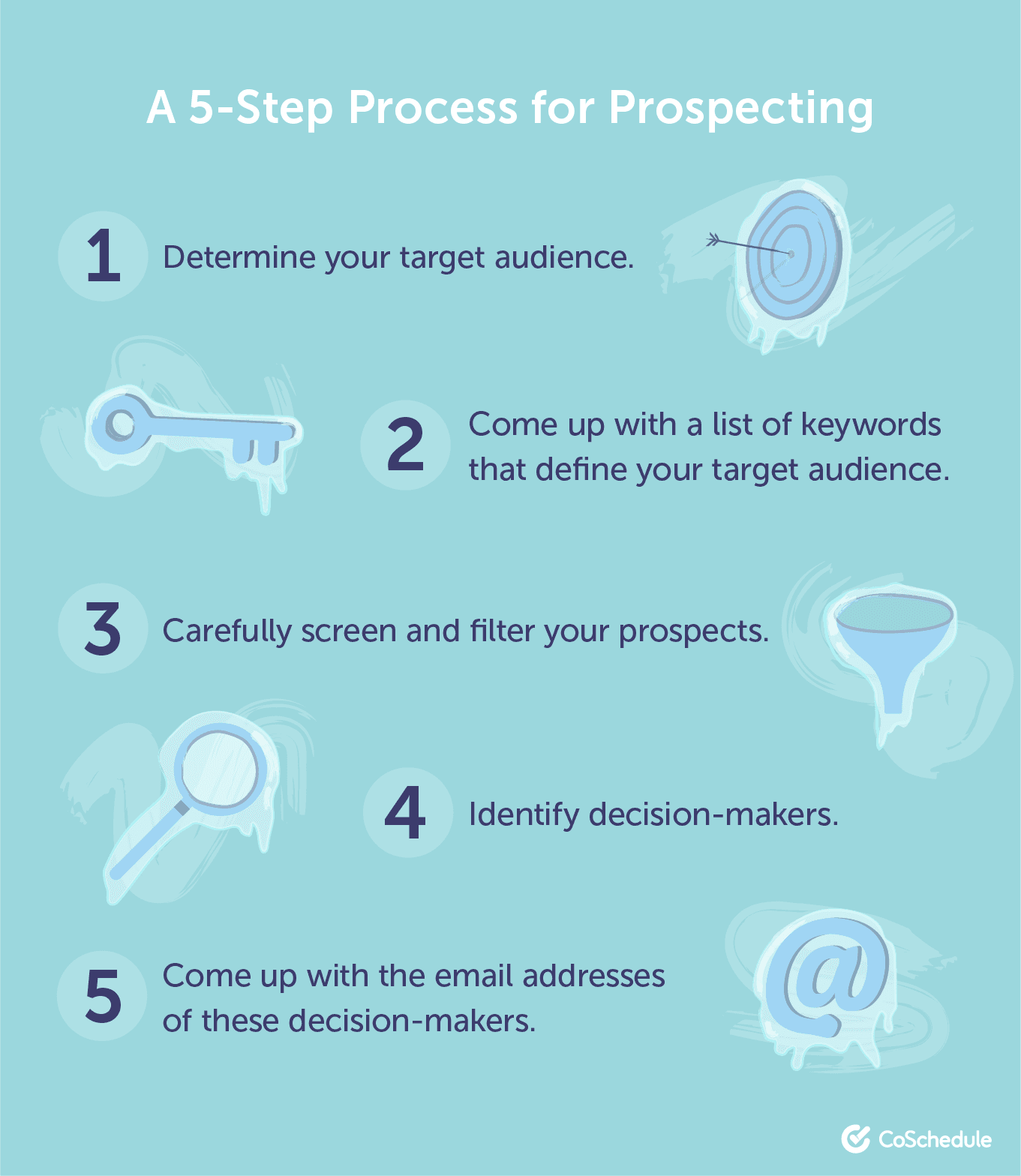
1. Determine Your Target Audience
This means you have to come up with a niche first. There’s nothing called “general cold email marketing” — it doesn’t work, or it will yield very poor results, at best. The most successful cold email marketers start by coming up with a target audience; this can be a set of people in a particular niche, a particular quality, or people at a certain level (educational, financial, etc).The most successful cold email marketers start by coming up with a target audience.
Click To Tweet2. Keywords Defining Target Audience
Once you’ve determined your target audience, you should come up with a list of keywords people will generally search for when trying to find them. For example, assuming I’m trying to target marketing agencies, my keyword could be something like:- Digital marketing agency
- Content marketing agency
- Inbound marketing agency
- Performance-based marketing agency
3. Screen and Filter Prospects
To ensure you don’t end up wasting time, you want to make sure you carefully screen and filter prospects in which you'll be getting in touch. It’s generally a good idea to analyze prospects based on their website, business model, and their finance information. This could include things like funding and/or revenue figures.4. Identify Decision Makers
Once you’ve come up with a list of businesses/companies, you need to identify decision makers at these companies. Depending on why you’re cold emailing, this could be the CEO, CMO, CTO, or other executive-level decision makers at the organization. In a lot of cases, you’ll find information about these decision makers on the “Team,” “Leadership,” or “About” page of the organization. You will also find this information on their LinkedIn page. For those who prefer a more step-by-step walkthrough, I share exactly how I use LinkedIn to find these decision makers in this video.5. Decision Maker Email Addresses
Before you start the actual cold emailing, you need to come up with a list of email addresses of the decision makers in which you will be sending your cold emails. You can do this using an email finder app or a manual approach. I have used — and had great experience with — the following email finder apps. I list them in order of effectiveness and accuracy based on emails they have generated for me: With all the above apps, you simply have to input the full name of a prospect and the company URL of the prospect, and the apps will try to find the right email address for you. All of these tools have a free trial, and they generally let you generate about 50 email addresses for free, but you have to pay for them if you want to use them extensively. For those who cannot afford these tools or are unwilling to invest in them, you can use a manual approach instead. With the manual approach, you come up with different variations of an email address. From here, try to verify whether it's accurate by searching for that variation in Google.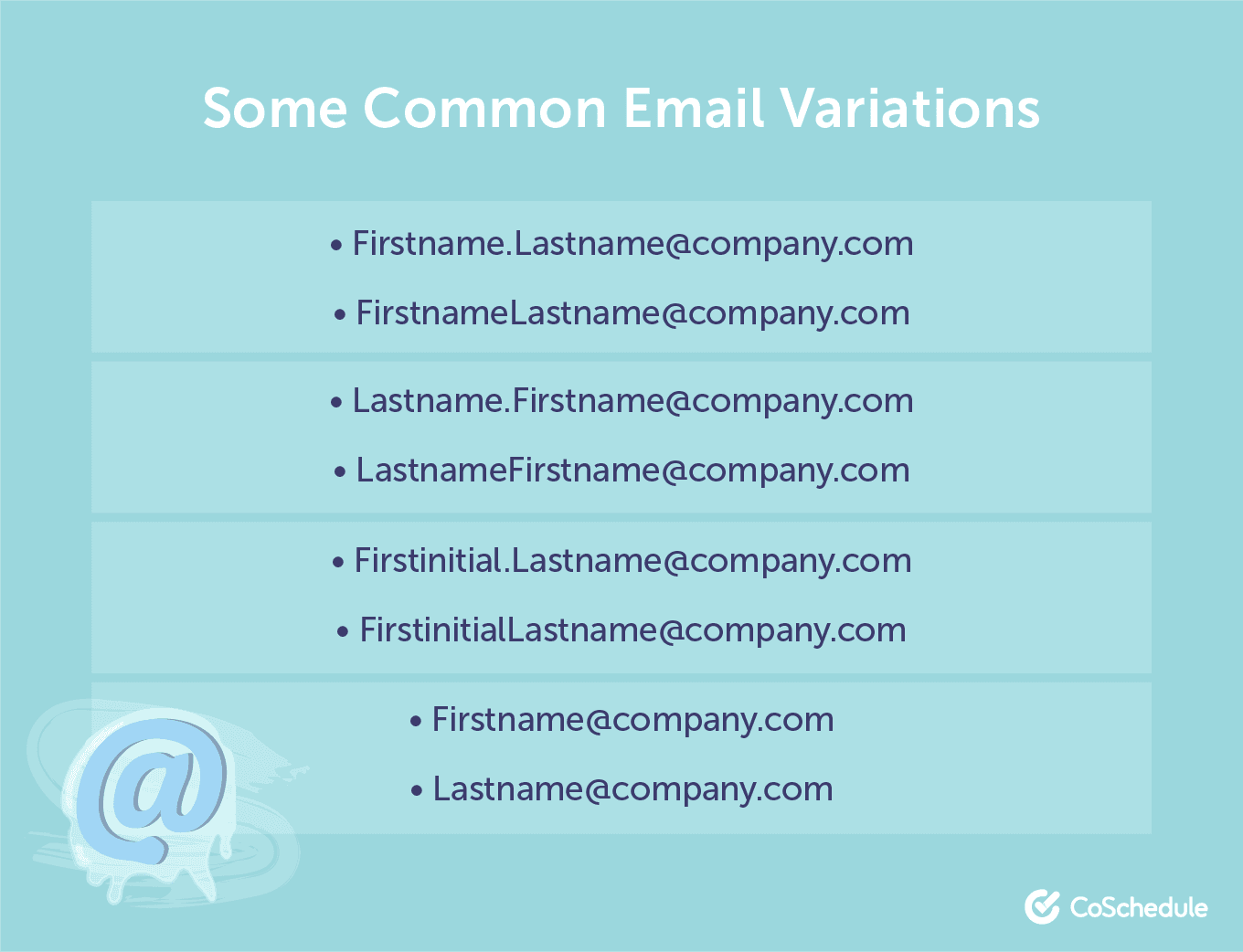 Of course, getting more creative will help you find more email addresses, so feel free to come up with more variations.
For those who want a step-by-step walkthrough, you can watch this video where I record myself finding email addresses with some of the above-listed email finder apps and the manual method:
Once you’ve completed the above steps and have a list of prospects, the next step is to compose the actual cold email. I’ll show you how to do that in a moment, but first let’s take a look at one of my most successful cold emails.
Of course, getting more creative will help you find more email addresses, so feel free to come up with more variations.
For those who want a step-by-step walkthrough, you can watch this video where I record myself finding email addresses with some of the above-listed email finder apps and the manual method:
Once you’ve completed the above steps and have a list of prospects, the next step is to compose the actual cold email. I’ll show you how to do that in a moment, but first let’s take a look at one of my most successful cold emails.
Analysis of a Cold Email That Resulted in $10,000+ in Freelance Writing Income
Before sharing how I write my cold emails with you, I’d like to first show a step-by-step analysis of one of my successful cold pitches: I sent the following cold email to a number of businesses a few years ago and netted a client within two hours of the cold emailing process on day two of the campaign.
The client I recruited using the above cold email awarded me work worth $625 the same day he responded, and he would later end up giving me work worth five figures during the period I worked with him.
I sent the following cold email to a number of businesses a few years ago and netted a client within two hours of the cold emailing process on day two of the campaign.
The client I recruited using the above cold email awarded me work worth $625 the same day he responded, and he would later end up giving me work worth five figures during the period I worked with him.
- It is personalized: A careful look at the above cold pitch will show two elements of personalization. The first is that I addressed the contact by name, and the second is that I referenced the name of his company in my email body.
- It is specific: I opened by explaining my reason for reaching out. This is clear, to the point, and makes it easy for the prospect to decide whether or not he wants to continue reading my email.
- I introduce myself and tell him why he should care: I introduced myself by saying, “I’m Bamidele Onibalusi,” but I didn't stop there. I showed him that he should care by highlighting relevant social proof, and I mention the fact that I’ve been featured in Forbes, The Huffington Post, and Digital Journal. It's also important that I mentioned my blog that has been read by millions of people. Since I’m pitching writing services, this tells him that he should pay attention to me.
- I specify how I can help: I was very specific about the services I offer, thereby giving him options to choose from.
A 5-Step Process for Writing a Successful Cold Email
Here’s a 5-step process I’ve found to be very effective for writing successful cold emails:1. Personalizing Cold Emails
Personalizing your cold emails can make a significant difference in the responses. I generally don’t recommend sending a cold email that is not personalized. According to Woodpecker, personalizing your emails can boost response rates by a whopping 242%.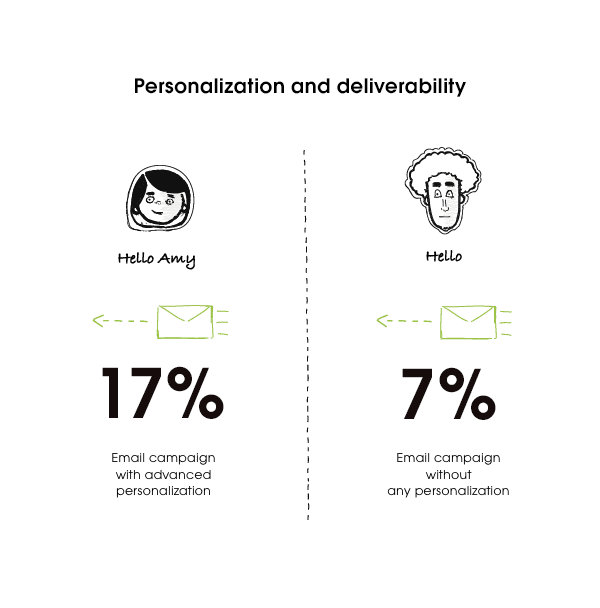 Woodpecker found that cold emails without personalization averaged a response rate of 7%. Cold emails with advanced personalization — which goes beyond just referencing the name of the recipient and the company involved — had an impressive response rate of 17%.
I generally personalize my cold emails by the name of the person and organization I am pitching. Then, I rely on volume to get results. You can take things a step further by including more personalized information. This could include highlighting a recent achievement of theirs or mentioning a problem they have reported on their social media/website.
Regardless of how advanced your personalization is, you want to make sure your cold emails are personalized to each recipient.
Woodpecker found that cold emails without personalization averaged a response rate of 7%. Cold emails with advanced personalization — which goes beyond just referencing the name of the recipient and the company involved — had an impressive response rate of 17%.
I generally personalize my cold emails by the name of the person and organization I am pitching. Then, I rely on volume to get results. You can take things a step further by including more personalized information. This could include highlighting a recent achievement of theirs or mentioning a problem they have reported on their social media/website.
Regardless of how advanced your personalization is, you want to make sure your cold emails are personalized to each recipient.
Regardless of how advanced your personalization is, you want to make sure your cold emails are personalized to each recipient.
Click To Tweet